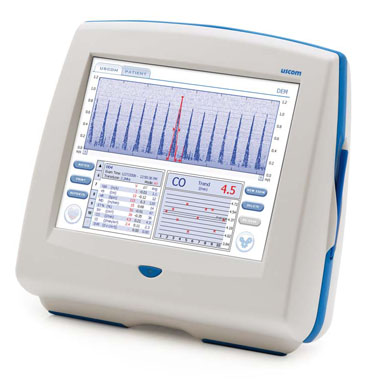USCOM in the Future.
In this brief guide I have tried to give you some insights in to the incredibly powerful tool that is the USCOM. This guide is not exhaustive, but I’m sure that you can already think of many uses for the USCOM in your own practice and of many past patients in whom you wished you had the USCOM available. As a little final food for thought, what about the USCOM in pre-hospital care at the scene of accidents, in patient transport and retrieval, in sports medicine, in pacemaker implantation, in verifying other monitoring systems, in the early diagnosis of sepsis and even in public health projects. As a tool to teach physiology and therapeutics it is unrivalled. How about clinical trials of new medications or treatment protocols? Even if the trial is not primarily aimed at the cardiovascular system, wouldn’t you like to know that it has no harmful effects on hemodynamics? I would if I were the patient! USCOM is probably limited only by your imagination….
Acknowledgements.
My thanks are due to my friends and colleagues Dr Antony Parakkal MD, Staff Specialist in Anaesthesia, Ms. Veronica Madigan, Senior Lecturer, School of Public Health, Charles Sturt University and Dr. Julia De Boos. I must also thank the Nursing staff of Broken Hill Base Hospital and Bathurst Base Hospital, N.S.W., Australia and Mildura Base Hospital, Victoria, Australia, for their input and feedback, and especially the staff of USCOM Ltd, Sydney, Australia, for their advice and criticism.

For more information on hemodynamics see the Uscom website -
Copyright © B E Smith 2007
Rev 001
Reproduction of this booklet is allowed only by permission of the author.
|

